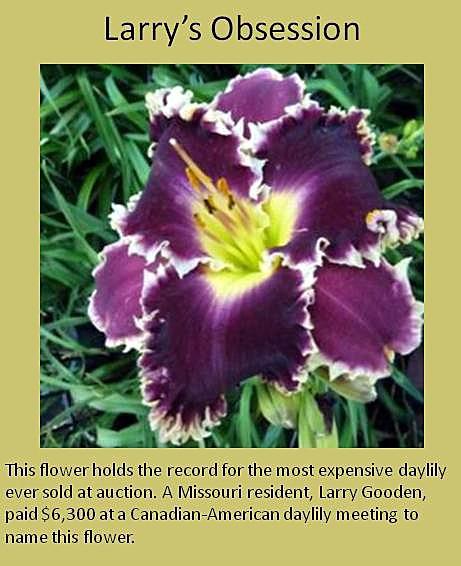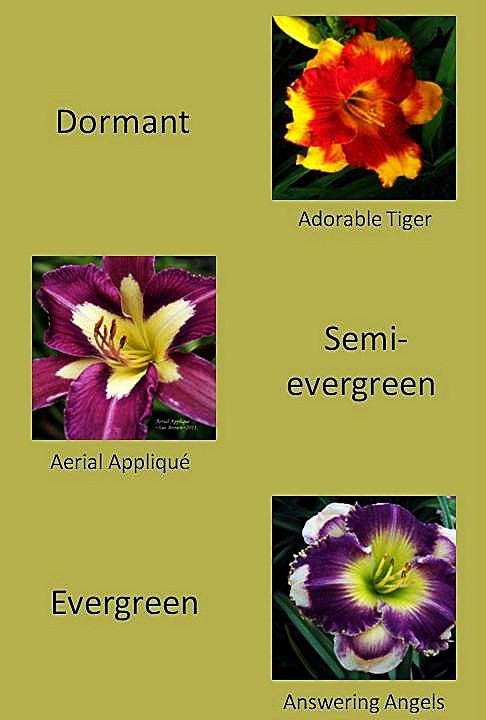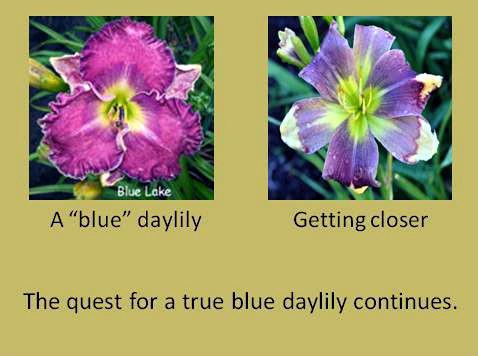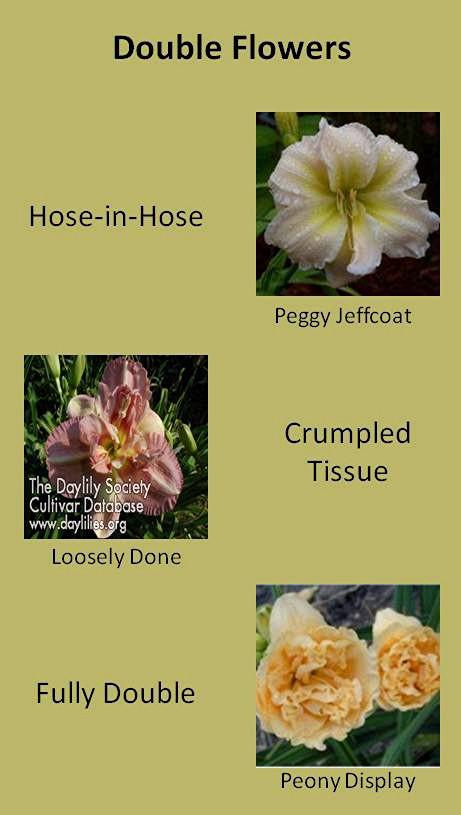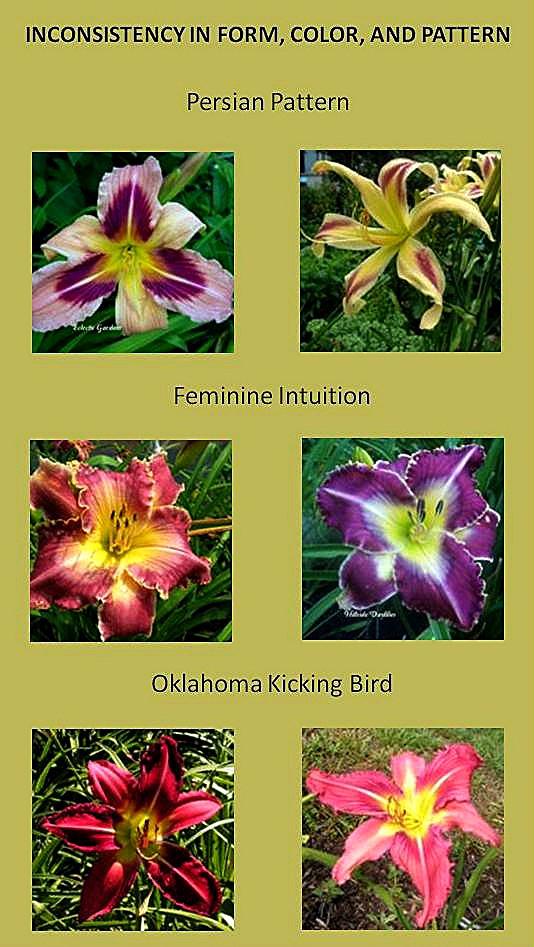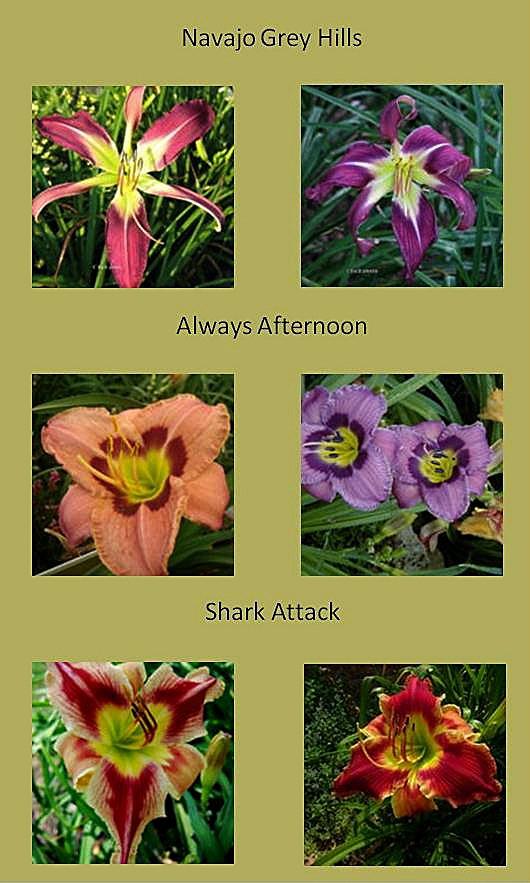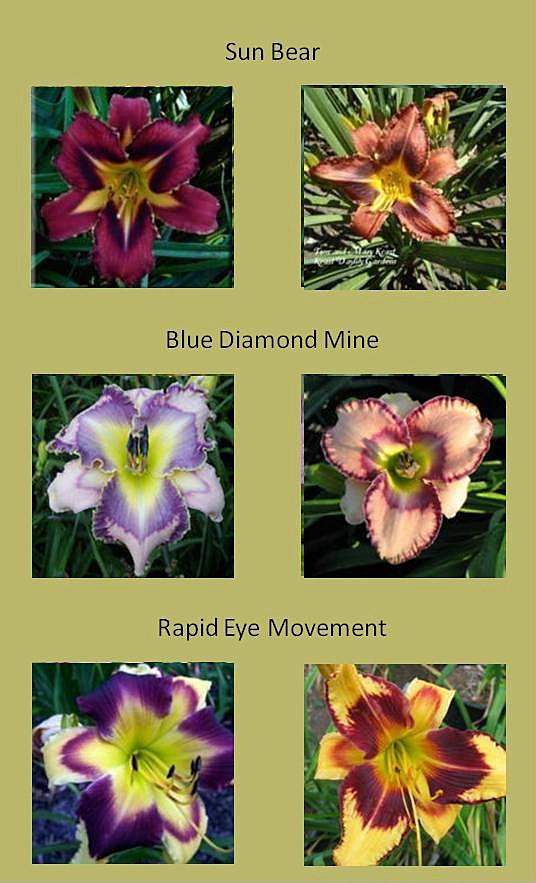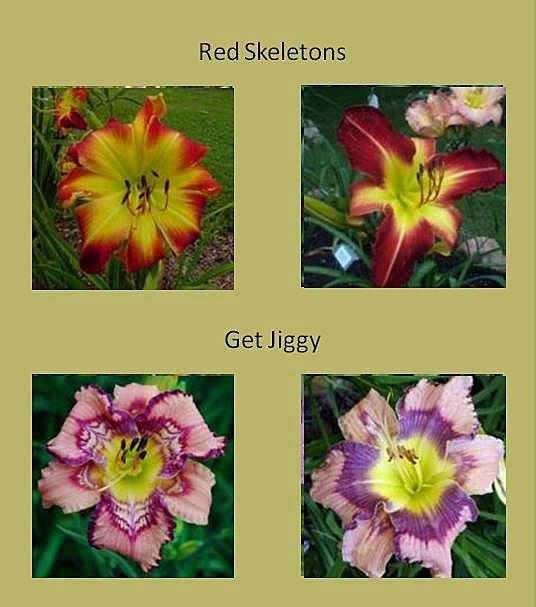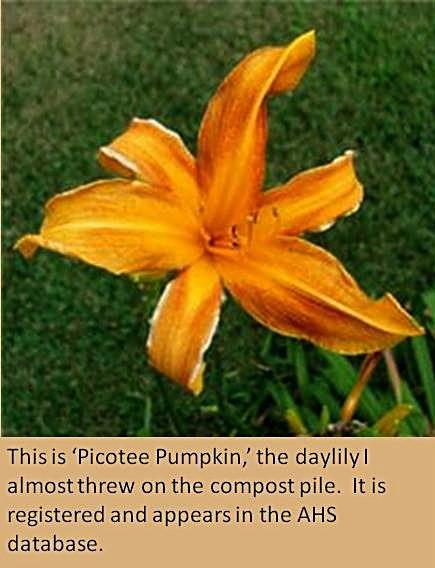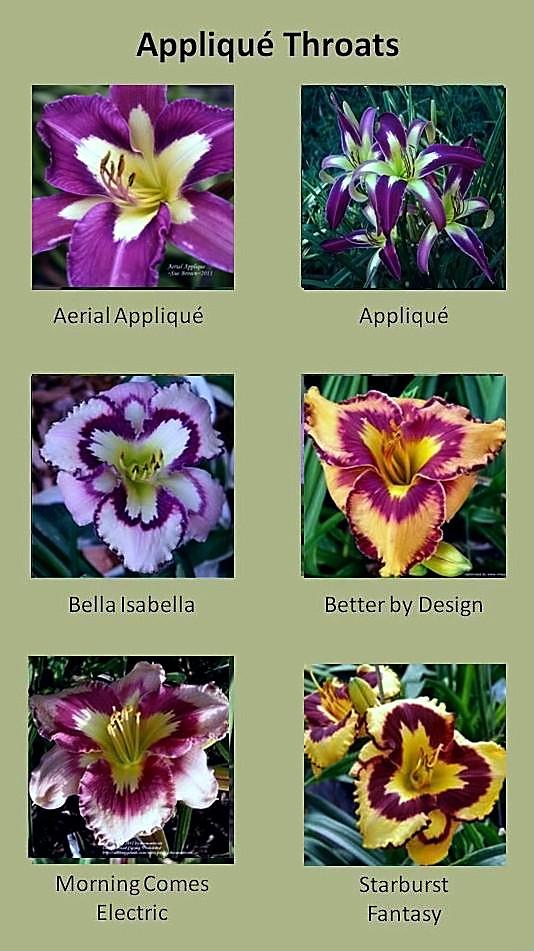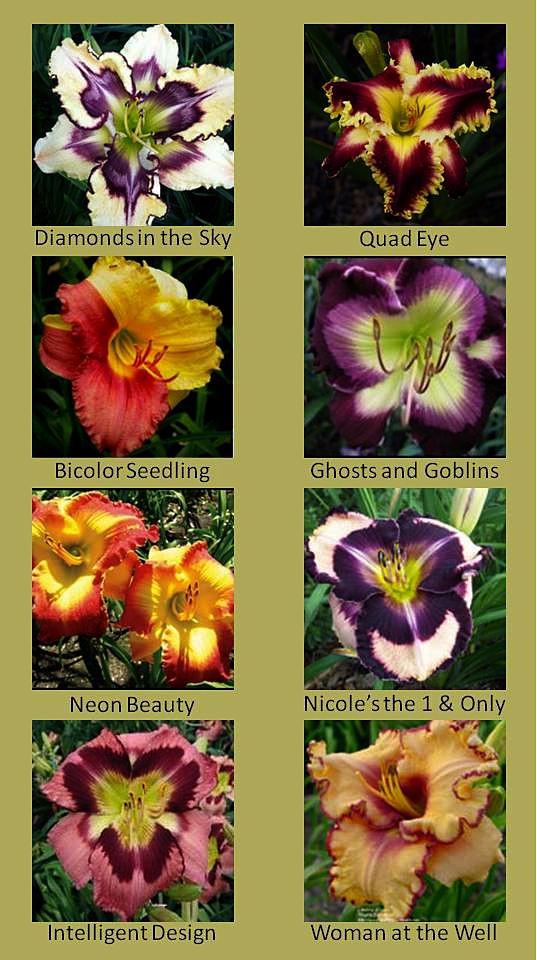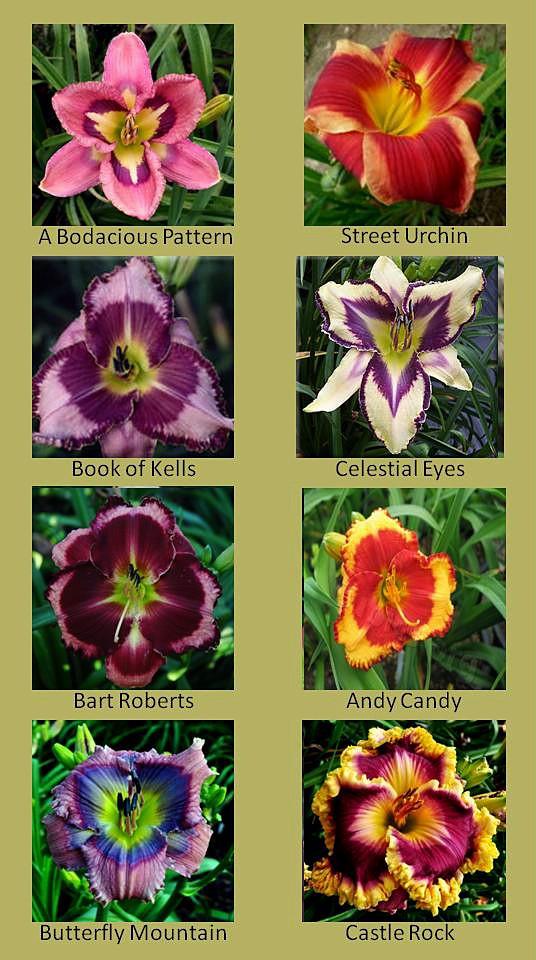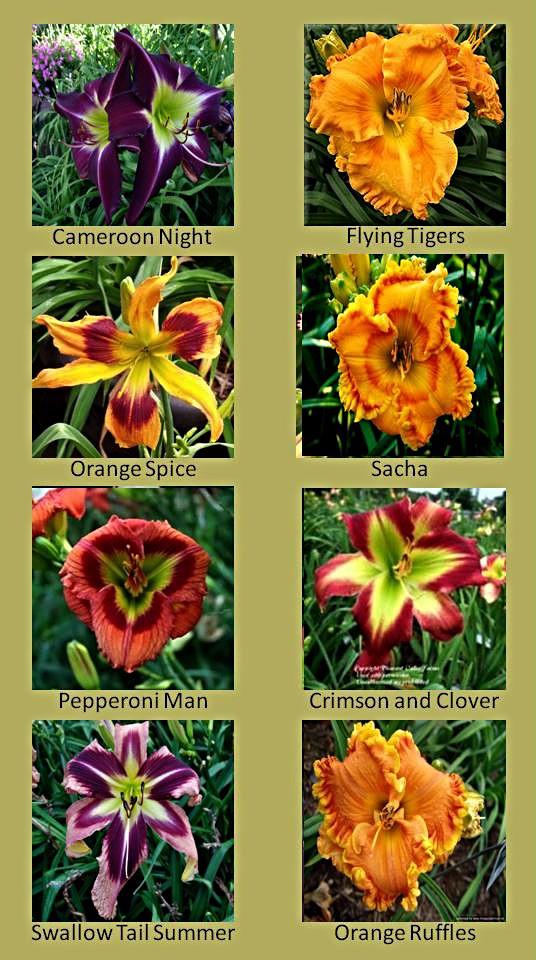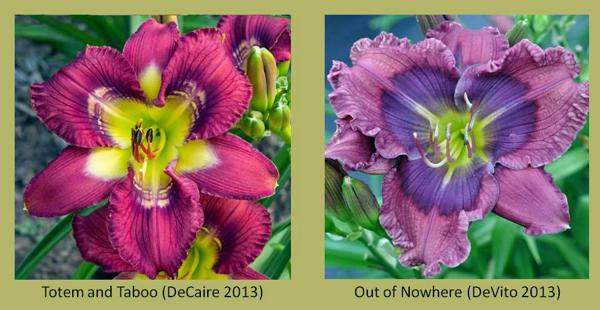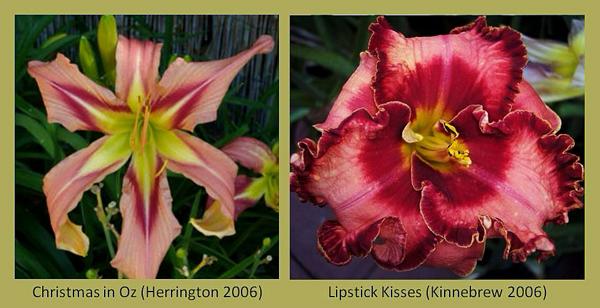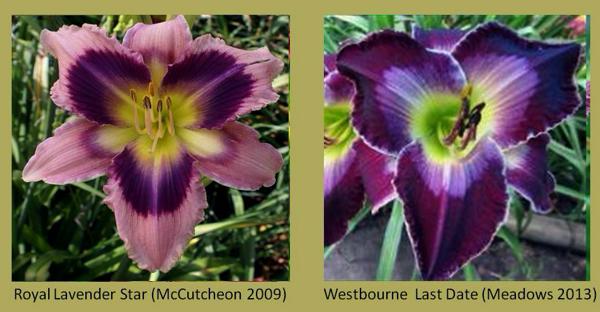Larry's Obsession: Discovering the Wonderful World of Daylilies
Dec 18, 2014
A Naive Beginner
I’ve had a few daylily plants in my garden beds for quite some time now. They are there primarily because a kind neighbor up the street shared some of her daylily seedlings that she had gotten from her grandmother who was a daylily hybridizer in California. From time to time volunteer seedlings would appear among the perennials in beds that contained those daylilies. I treated them as weeds, pulled them out, and threw them on the compost pile, thinking that surely they were not worth fussing with. One day, on a sudden whim, I decided to transplant a seedling instead, let it grow, and see what color the blossoms would be.
My initial reaction was disappointment. It was orange.
To my untutored mind, orange daylilies were much too common. They reminded me of the lowly and ubiquitous ditch lily that grows with abandon along roadsides throughout the state. I thought my efforts had been in vain, but I decided to let the plant live to see another season despite my disappointment. In the interim, just out of idle curiosity, I began googling orange daylilies. I could barely believe what I found. There were orange ruffled ones, spidery ones, and UFOs (unusual forms). I discovered that what I had was an orange UFO with crispate tendencies. Not only that, the sepals had a white picotee edge! I was stunned.
The Journey Begins
Foliage behavior
Digging further into the world of daylilies, I became conversant with all kinds of concepts new to me. I discovered that there is a whole set of terms used to describe each daylily cultivar. One set describes foliage tendencies: dormant, semi-evergreen, and evergreen. Plants whose foliage goes dormant are generally considered hardy in northern gardens, semi-evergreen ones may or may not be, and evergreen ones do well in southern gardens but many not in northern gardens. I also discovered that these three terms can be quite subjective, with several hybridizers coming right out and saying so. A cultivar in one hardiness zone may behave differently in another zone. I came across several instances where one grower labeled a cultivar as evergreen but others described the same cultivar as either dormant or semi-evergreen.
Living and gardening in zone 5a/b, which is too cold for many evergreen cultivars, I soon developed a fairly serious case of “zone envy.” It seemed like the most beautiful daylilies were often evergreens. I learned later that several hybridizers had actually relocated to Florida or to other warmer regions so they could grow and work with these beauties.
Ploidy
Another daylily descriptor is ploidy, a word I’d never encountered before. I do remember a bit about genetics from college classes in botany and zoology. And I do remember the terms diploid and tetraploid. What surprised me was that all daylilies do not have the same number of chromosomes. Diploid ones have 22 chromosomes (two sets of 11 chromosomes) and tetraploid ones have 44 (two sets of 22). Furthermore, it is possible to convert diploids into tetraploids by subjecting diploid seedling embryos to a substance called colchicine. Recent technological advances have made plant propagation possible via cloning and tissue culture in addition to the usual seed method. Colchicine treatment works with these methods too.
So why would you want to make such conversions? Generally speaking, you can’t cross diploids with tetraploids, although there are a few exceptions. Making the conversion allows desirable traits of diploids to be introduced into the tetraploid gene pool. Tetraploids also tend to have larger flowers with heavier substance and stronger stems.
There are also a few triploid daylilies with three sets of chromosomes. They are rare, generally infertile, and reproduce by stolons (underground runners). The common ditch lily (Hemerocallis fulva) occurs in both diploid and triploid forms.
XXX Scape Characteristics
Height, branching, and bud count are also important attributes in evaluating a cultivar. As you might guess, the more branching and the higher the bud count, the more desirable the cultivar.
Blooming habits
Descriptors include flower size, bloom time, and presence or absence of rebloom. I was disappointed to discover that in most cases no notation is made of the number of scapes produced or the age of the plant being evaluated. Listing rebloom is helpful, but we don’t know how much rebloom there is. A cultivar with a low bud count could produce oodles of scapes and put on a better show than a cultivar with a higher bud count.
Fertility
Some hybridizers and other growers may note that a cultivar is “fertile both ways.” That means that the pollen from its blossom easily fertilizes the other bloom involved in a cross, and that the cultivar easily forms seeds when fertilized with the pollen of another cultivar.
Obsession Sets In
I have viewed and reviewed photos and descriptions of more than 30,000 cultivars. I ran each one that interested me—and that was a good majority of them—through the All Things Plants (ATP) daylily database(https://allthingsplants.com/plants/group/daylilies/). I can’t say enough about how extraordinary this database is. Practically every cultivar I researched is included, and there are now more than 70,000 cultivars registered with the American Hemerocallis Society (AHS). One of its most valuable aspects in my case is the fact that the ATP database contains multiple photos of many of the cultivars listed. It allows me to make rough judgments about the range in form, color, and pattern in a given cultivar. More about this later.
In order to deal with such a large number of daylilies (about half of the registered cultivars in existence), I had to set some parameters. I decided not to consider daylilies that have blossoms smaller than 5 inches, are evergreen, have a bud count of 15 or lower, or are taller than 48 inches.
(I've since changed my mind about evergreen daylilies. After researching them thoroughly, I was able to identify over 2,200 cultivars listed as hardy in my zone 4/5 garden and have begun to grow some of them with good results. You may view the list I compiled here: https://cottageinthemeadow.plantfans.com/BlogPosts/EVERGREEN_DAYLILIES_HARDY_IN_ZONE_5_AS_LISTED_BY_GROWERS)
I developed definite preferences early on as I began sifting through daylilies on hundreds of websites. (Googling "daylily" generates over 600,000 hits.) There was more than a little irony in what my preference for color turned out to be: Orange! That’s especially odd, given that my favorite color is blue. I would have been out of luck searching for blue daylilies, though, because there are no solid true-blue ones. Yet. And that's not for lack of trying on the part of many well-known hybridizers.
Other preferences that manifested themselves along the way included an inclination toward cultivars that have rich colors. I avoided colors that were muted or muddy. Pastels just didn’t excite me. As it turned out, I was even less excited by toothy petal edges and most doubles. As one hybridizer put it, “doubles often look like crumpled, used tissues.”
I hasten to add that in expressing my preferences I don’t mean to offend those who love teeth or doubles. The doubles I do like are those that are consistently fully formed or are strictly hose-in-hose. The operative word here is “consistently.” I came across so many cultivars whose double forms were all over the map, from single blooms, to a few odd petals here and there, to fully double, all on the same plant. I especially appreciated those growers who stated right up front that the blossoms of a given cultivar were actually double only X% of the time. Numbers ranged as low as 50%.
Bumps Along the Way
Inconsistency in form, color, and pattern
I was totally unprepared for the variations that exist in daylily blossoms beyond the “double” issue just mentioned. So variable are the blossoms of some cultivars that I, in my naiveté, contacted database managers to report what I thought were obvious errors, where the wrong photo had been posted for a cultivar. Below are some examples of what I encountered.
I rest my case.
As you can see, variation in form and color can be extreme. The first 'Red Skeletons' image above is polymerous or polytepal. Normal single-flowered daylilies have three petals and three sepals. Polymerous ones have four or more of each. Such forms can appear occasionally on many cultivars. There are newer cultivars that produce a large percentage of polymerous blooms, some even 100% of the time. Be careful when you see this flower form, though. Some growers will post a photo of a polymerous blossom in their lists of cultivars available, leading you to believe that the cultivar is largely polymerous when that is not the case.
Patterned daylilies are all the rage at the moment. But the patterns can be very unstable. Take a look at 'Get Jiggy' above. If I had seen only the photo on the left, I would have swooned over this cultivar and perhaps even shelled out more money than I normally would for a daylily. Now look at the bloom on the right. There is still something of a pattern present, but one not nearly as striking as the one on the left.
Okay, I'll come clean now. I actually bought it anyway!
There are a number of factors that cause all these variations. Among them are photography (type of camera, camera settings, light conditions, use of photo software), growing conditions, time of day, and genetic traits. Along the way I discovered that photos with dark backgrounds make the colors of a blossom appear more intense. In daylight the colors are often considerably paler. So when I’m evaluating cultivars on the Internet, I try to remind myself that I’m looking at photos, not at the actual, real-life flower.
It’s only natural to want to display a newly introduced cultivar in its best possible light. I found myself doing the same thing when I selected a photo to accompany the AHS listing of my first introduction (photo above).
But there’s another very important factor to consider here that has less to do with how the blossom actually appears in natural daylight: the genetics. In a number of instances I found myself thinking, “So what, if the blossoms look somewhat different in the garden than they do in the photo, I want those genes!” That's precisely what I did in the case of 'Get Jiggy' above.
While it’s not nearly as sexy or exciting as creating the latest intricately patterned daylily, I wish hybridizers would place more emphasis on producing cultivars that are consistent in the appearance of their blooms.
Daylily prices
Buying daylilies on the Internet can be a heady experience, especially if you check out the Lily Auction at http://www.daylily.com/cgi-bin/auction.cgi. I’ve been able to obtain high-priced daylilies at half the price asked by a hybridizer or other growers (as was the case with 'Get Jiggy'). Before I bid on a cultivar, I set a price limit for myself. In the midst of a bidding contest, it’s easy to get caught up in the heat of the moment and end up paying more than you had intended. If the cultivar you’re seeking is not up for bid at the auction, be sure to check out all the Internet sources for that particular daylily. Prices can vary considerably (See my post below, "Variation in Daylily Prices." And be sure you know whether you’re paying for a single fan or a double one.
Errors
Just as with any search on the Internet or within a website, typos and other errors creep into the text. Most of the ones I encountered were on sellers’ websites. They caused me considerable consternation when I copied the name from the website and plugged it into the ATP database. The most common errors were misspellings, apostrophes omitted, apostrophes inserted where they shouldn’t be, hyphens omitted, and hyphens inserted where they shouldn’t be. It sometimes took a bit of detective work to figure out why a certain daylily I was searching for in a database did not display. Invariably, it was an error in the name of the cultivar.
You will find that omitted apostrophes are the most common problem. Often that's not an oversight, but rather due to a bug in many servers. They can't handle apostrophes. The result is usually something like this: "The Beginner’s Guide to Dahlia Cuttings." The quick solution is simply to omit apostrophes all together.
Daylily names
I appreciated any levity I came across as I was doing my research. Slogging through the photos of over 30,000 daylilies sometimes became a bit tedious. Names of cultivars easily filled the bill. In a world where each year 200+ cultivars per month are submitted to the AHS for registration, a hybridizer has to get the attention of potential buyers. One way to do that is to give a cultivar a distinctive name. Song titles and lyrics seem to be popular, as are wordplay, references to food and drink, use of famous names, and downright wacky concoctions. It would have made my research easier if all daylilies were named for their characteristics, but I much prefer the assertive creativity found in more recent daylily names. Here are just a few examples: ‘Tempest in a Tutu,’ ‘Grapefruit Guts,’ ‘God’s Gift to Warthogs,’ ‘The Moose Camped in a Tent on Tuesday,’ ‘Aquadisiac,’ ‘Dreaming Out Loud,’ ‘Intent to Bite’ (This one is actually descriptive as it is a flower whose petals have “sharks teeth” edges.) And finally, one which made no sense to me at all and therefore caught my attention: ‘Lone Mountain Fangs Giving.’ See my "Daylily Names" blog post for an in-depth treatment of this subject: https://cottageinthemeadow.plantfans.com/BlogPosts/DAYLILY_NAMES
The Point of My Efforts
Aside from acquainting myself with the wonderful world of daylilies, my goal has been to identify the traits I want to work with as a newly minted hybridizer. I’m following the advice of one well-known breeder, who emphasizes that you must set a specific goal in your hybridizing program and focus on that. Otherwise, you go off in too many directions and perhaps accomplish very little in the way of producing cultivars worthy of registration.
So far, I’ve narrowed the field down to three traits: appliqué throats, prism patterns, and polytepal flowers. Here are some of the ones I’ll be working with this coming season:
Some Eye Candy
Finally, to give you a peek at what’s currently out there, here are some recent intros and seedlings from well-known hybridizers that caught my fancy—not as candidates for my hybridizing program, but simply as amazing daylily photos:
Photo credits
Mark and June Singletary, Jammins Daylily Garden, ‘Diamonds in the Sky'
Jamie Gossard, Heavenly Gardens, 'Wolfman'
Mary Burgents, Morning Star Daylilies, bicolor seedling
Di DeCaire, Patterned Daylilies, 'Yumph,' 'Four Beasts in One,' I Don't Kid'
Photo with "Getting closer" caption is of 'Behold the Believable,' Nicole Devito, hybridizer
Remaining photos are from the ATP daylily database.
Links to websites of selected well-known hybridizers
Abajian: http://ledgewoodgardens.com/
Ansari: http://flourishingdaylilies.com/index.html
Bachman: http://www.vendio.com/stores/votdlilies/
Baxter: http://www.daylily.net/index.asp
Bettencourt: http://herringtondaylilygarden.com/2014.html
Burgents: http://www.morningstardaylilies.com/#
Boatwright: http://www.fhb-sass.com/
Carpenter: http://www.lilyfarm.com/index.html
Cochenour: http://www.fairyscapedaylilies.com/Cochenour.htm
DeCaire: http://patterneddaylilies.blogspot.com/
Devito: http://www.nicolesdaylilies.com/
Doorakian: http://www.noreastdaylilies.com/2014_intros.htm
Emmerich: http://springwoodgardens.com/daylilies.html
Faulkner: http://www.naturalselectiondaylilies.com/
Gossard: http://www.daylilynet.com/
Grace: http://www.gracelandgardens.com/
Grossmann: http://www.northernlightsdaylilies.com/
Hansen: http://www.ladybugdaylilies.com/
Hanbson: http://crintonic.com/?product_cat=2014
Harry: http://www.peteharrydaylilies.com/
Herr: http://donherrdaylilies.com/
Herrington: http://herringtondaylilygarden.com/2014.html
Jeffcoat: http://www.singingoakesdaylilies.com/
Kinnebrew: http://www.spacecoastdaylilies.com/
Kirchoff/Morss: https://daylilyworld.net/
Korth: http://www.pinewooddaylilies.com/
Kropf/Calderon: http://www.earlybirddaylilies.com/ (Type Kropf in search box)
Lambertson: http://www.artgallerygardens.com/
Mahieu: http://rockhavendaylilies.com/wordpress/gallery/mahieu
Manning: http://www.daylilyplace.net/63406868
Marchant: http://druidcitydaylilies.blogspot.ca/2014/10/2015-introductions.html
Maryott: http://daylilygarden.net/cgi-bin/Web_store/web_store.cgi
Mason/Culver: http://longlesson.com/northcountrydaylilies/index.htm
Matzek: http://www.harmonhillfarm.com/danmatzek.htm
McCutcheon: http://www.kimsdaylilies.com/
Meadows: http://westbournelilypatch.com/
Michaels: http://www.daredevildaylily.com/
Moldovan/Woodhall: http://www.daylilytrader.com/moldovan_gardens_2011.htm
Morry: http://www.delanodaylilies.com/introducing-mick-morry/morry-2010/
Petit: http://www.petitdaylilies.com/
Polston: http://pleasantvalleygardens.net/
Reed/Murphy/Metzger: http://www.woodhengegardens.com/categories
Reilly: http://www.philreillydaylilies.com/
Roycroft: http://roycroftdaylilies.com/
Salter: http://salterdaylilies.com/
Scott, B.: http://www.bobscottnursery.com/daylilies.html
Selman: http://www.blueridgedaylilies.com/
Shooter: http://www.mariettagardens.com/
Singletary: http://www.mariettagardens.com/
Stamile/Pierce: http://www.distinctly.on.ca/floydcove/
Stamile: http://www.fairyscapedaylilies.com/Stamile.htm
Trimmer: http://trimmerdaylily.com/
Wild: http://www.gilberthwild.com/
Wilkinson: http://greywoodfarm.squarespace.com/
